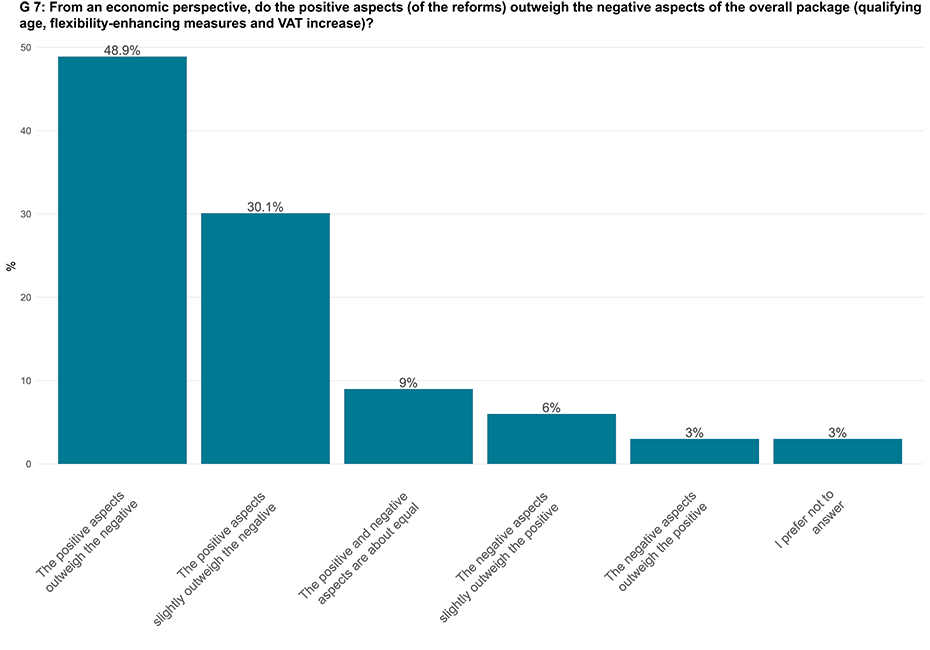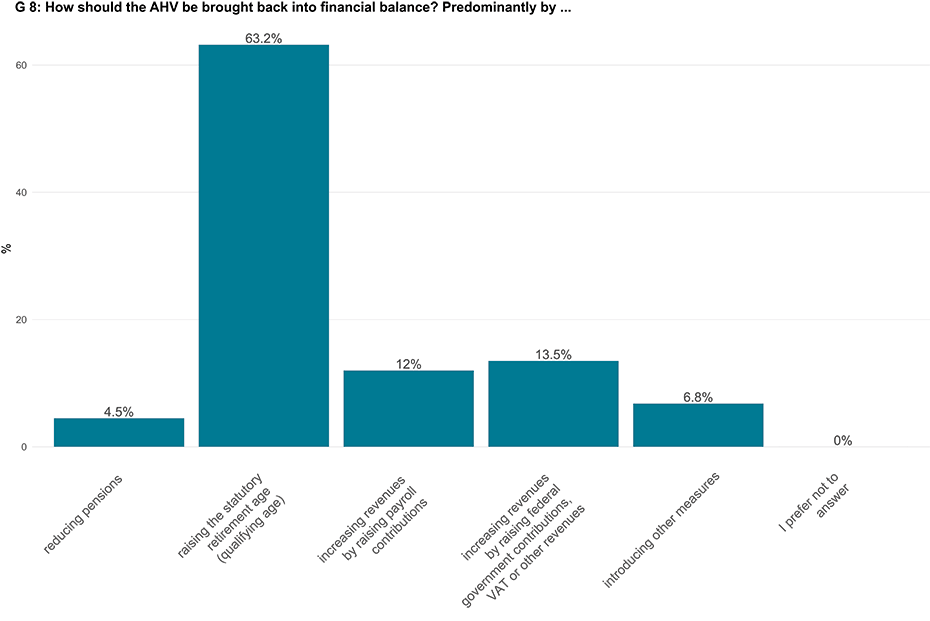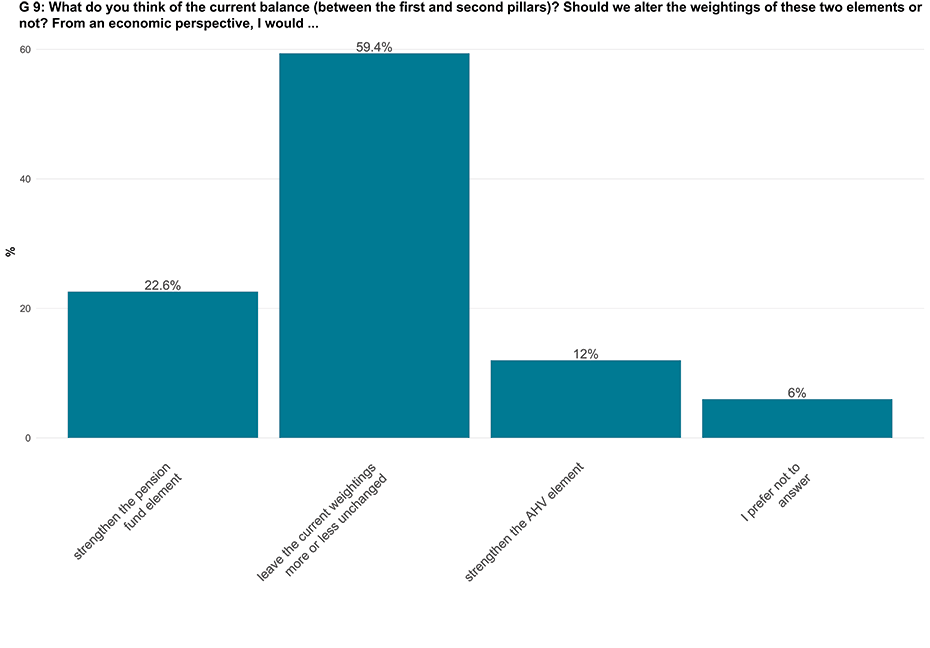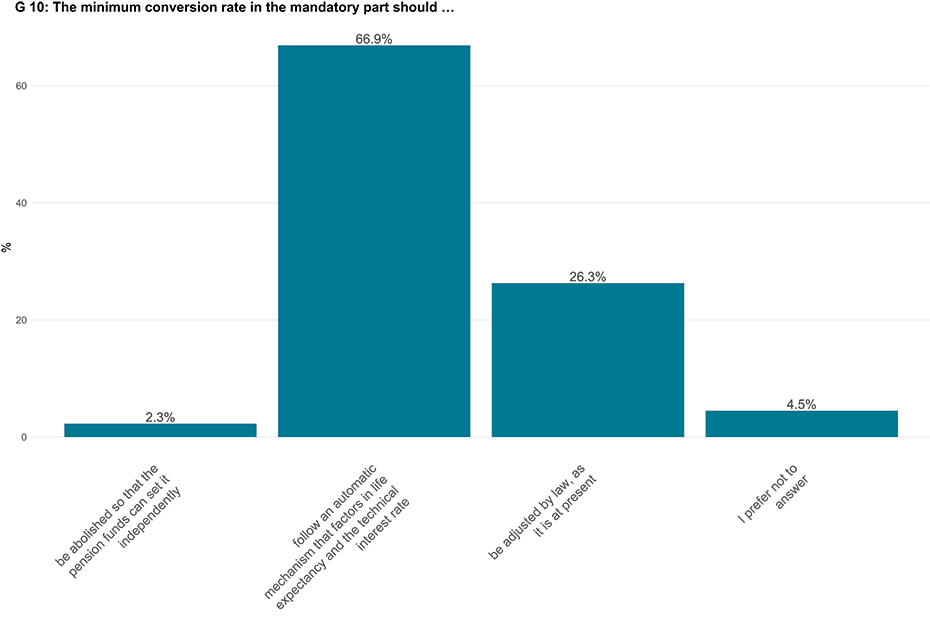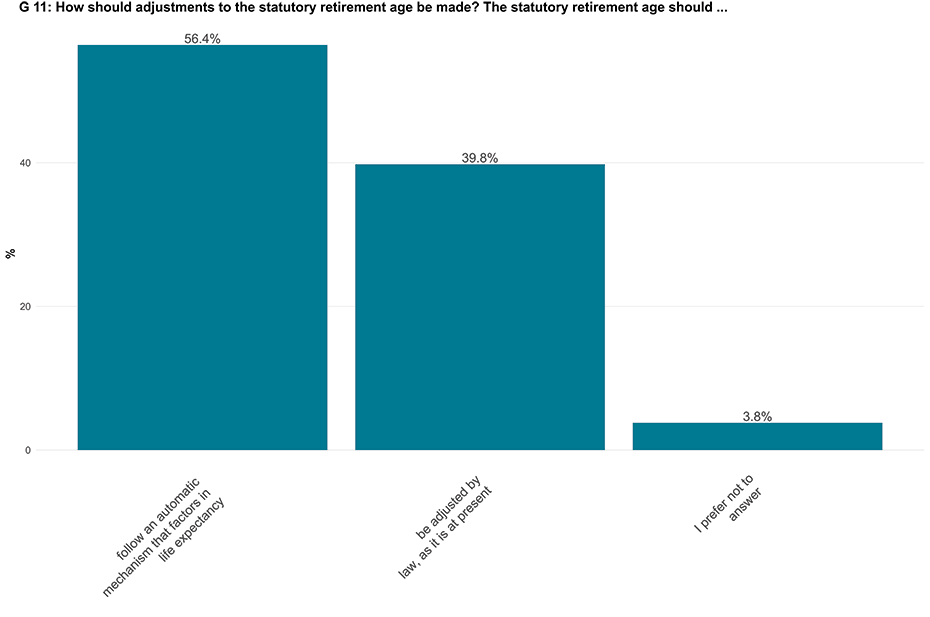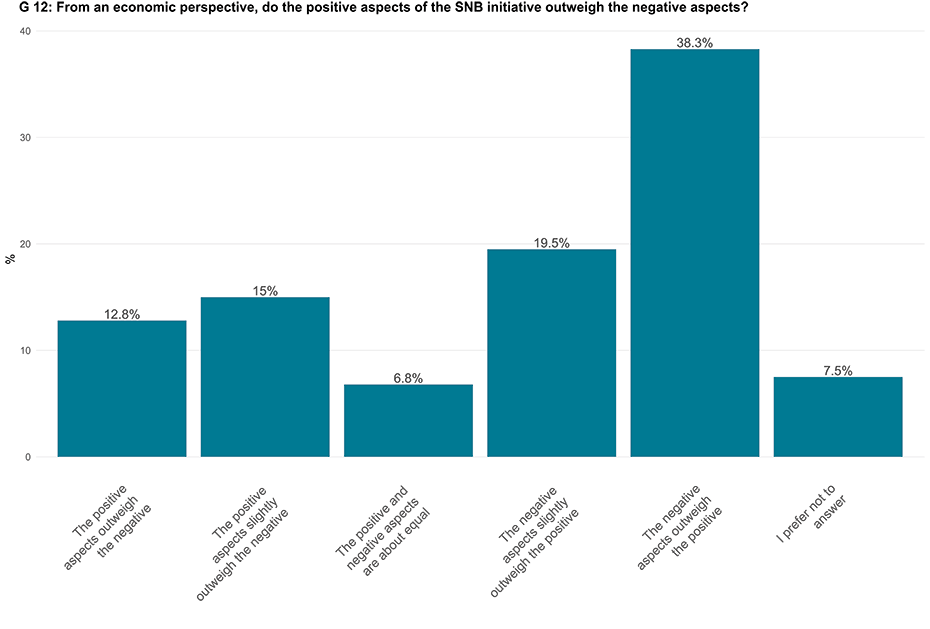
KOF-NZZ survey reveals that economists are in favour of rule-based adjustments to the retirement age
In August, KOF and the Neue Zürcher Zeitung (NZZ) newspaper surveyed economists at Swiss universities on the country’s pension system and the vote on the 'AHV 21' reforms. A majority of the 133 respondents would be in favour of the minimum conversion rate in the second pillar and the statutory retirement age following a rule-based automatic mechanism instead of the two parameters only being able to be adjusted by law.
Demographic change is placing an increasing burden on the finances of the pay-as-you-go old-age and survivors’ insurance scheme (AHV). The old-age dependency ratio – defined as the number of individuals aged 65 and over per 100 people aged between 20 and 64 – was 24 back 25 years ago, is currently 32 and will rise to 46 in the next 25 years according to a moderate scenario produced by the Swiss Federal Social Insurance Office (FSIO). The FSIO forecasts that, in the absence of any reforms, the AHV’s expenditure will exceed its income from 2025 onwards. To secure the medium-term funding of the AHV, the Federal Council has drawn up the ‘AHV 21’ reforms, which were narrowly approved by the Swiss electorate on 25 September this year. A majority of the economists surveyed in August also approved of the reforms (see chart G 7). Firstly, these reforms will lower expenditure, as the qualifying age (statutory retirement age) for women has gradually been raised by one year to 65. The qualifying age will thus be the same for both sexes. The reforms also include measures that allow for a more flexible transition from working life to retirement and provide stronger incentives to continue working past retirement age. And, secondly, value added tax (VAT) will be increased by 0.4 percentage points to 8.1 per cent and the additional revenue will be allocated to the AHV.
Another question asked the economists to indicate which measure they considered the most suitable to improve the AHV’s financial situation. 63 per cent of the economists surveyed believe that raising the statutory retirement age is the most appropriate measure (see chart G 8). The second and third most frequently cited measures were to increase revenues by raising federal government contributions or VAT revenues (14 per cent) or by raising payroll contributions (12 per cent). Pension cuts, on the other hand, are being considered less.
The old-age pension scheme in Switzerland is based on both the pay-as-you-go system (basis of the first pillar, AHV) and the funded system (basis of the second pillar, pension fund). The first pillar is based on the principle of redistribution, as those currently in employment pay for those insured under the AHV at retirement age. Since a fixed percentage of salary is paid into the AHV and a maximum level of pension is fixed, the AHV tends to involve redistribution from high earners to low earners. In the second pillar, on the other hand, everyone saves individually for their pension pot. Compared with the funded system, the pay-as-you-go scheme is more profitable – from an economic point of view – the higher the population, and wage growth is in line with interest rates in the capital markets. The economists were asked in the survey whether they considered the current balance between the two pillars to be appropriate. 59 per cent of the economists surveyed think that the current weightings of these two elements are almost optimal (see chart G 9). The prevailing view among the remaining economists is that the pension fund element should be strengthened at the expense of the AHV.
Minimum conversion rate and retirement age to follow automatic mechanism
Pension funds are also facing financial challenges as a result of increasing life expectancy and the currently low level of interest rates, which is why reforms are being debated in parliament. One of the reforms involves reducing the minimum conversion rate. This rate determines how much of the money saved is paid out as a pension each year once the statutory retirement age is reached, and it can currently only be adjusted by law. An alternative to a static, legally fixed rate would be a dynamic, formula-based adjustment under which, for example, life expectancy and the technical interest rate could be taken into account. A majority of the economists (67 per cent) would be in favour of the minimum conversion rate following an automatic mechanism and thus not being dependent on political decisions (see chart G 10). 26 per cent, on the other hand, want to stick with the current approach. Hardly any of the survey respondents would be in favour of abolishing the minimum conversion rate so that the pension funds could set it independently.
The retirement age is also laid down in law. In order to change this, the Young Liberals of Switzerland have launched an initiative that is currently pending before parliament. This initiative calls for the retirement age to be automatically adjusted in line with the life expectancy of the Swiss resident population over time. While 56 per cent of survey respondents would agree in principle to a rules-based adjustment, 40 per cent would prefer a statutory adjustment (see chart G 11).
SNB distributions should not be allocated to the AHV
A further initiative concerning the AHV is currently at the signature-collection stage. The SNB initiative launched by the Swiss Trade Union Federation demands that if the Swiss National Bank (SNB) makes a large distributable profit, some of it should be allocated to the AHV stabilisation fund. The distributions currently allocated to the federal government and the cantons would remain unaffected. A majority of 58 per cent of survey respondents would reject this initiative for economic reasons. This is probably because the initiative could compromise the independence of the SNB by mixing monetary policy with social policy. 28 per cent, on the other hand, see the initiative as beneficial and 7 per cent are indifferent (see chart G 12).
The KOF-NZZ survey of economists
The KOF-NZZ survey of economists covers topics relevant to economic policy in Switzerland and provides a means of making the views of academic economists visible to the public. KOF’s media partner in the preparation and interpretation of this survey of economists is the Neue Zürcher Zeitung (NZZ) newspaper. In August, KOF and the NZZ conducted a survey of the Swiss pension system and the ‘AHV 21’ reforms. 906 economists were contacted and responses were received from 133 economists at 17 institutions. Further information on the KOF-NZZ survey of economists is available here.
Literature reference:
external pagehttps://www.bsv.admin.ch/bsv/en/home/social-insurance/ahv/finanzen-ahv.html
Contacts
KOF Konjunkturforschungsstelle
Leonhardstrasse 21
8092
Zürich
Switzerland
KOF FB Konjunkturumfragen
Leonhardstrasse 21
8092
Zürich
Switzerland

